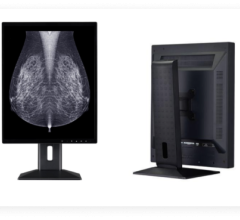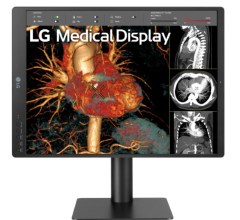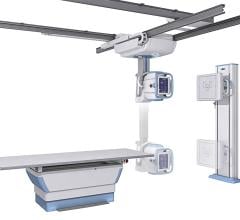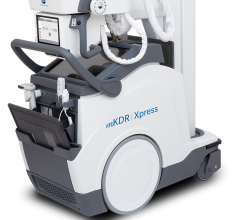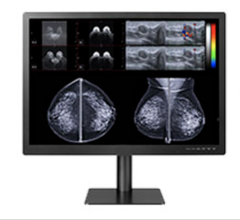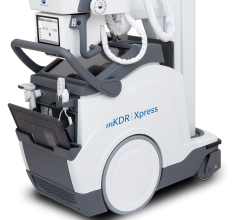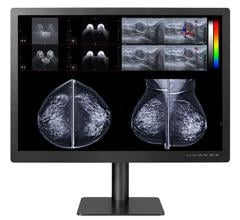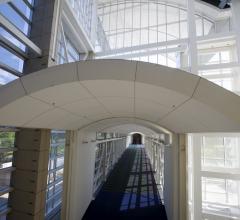Flat panel displays (FDP) encompass a wide variety of technologies that enable display monitors to be much more slender and lighter than the more prevalent cathode ray tubes (CRT). The most popular forms of the FPD are the liquid crystal display (LCD) and plasma display panel (PDP). This market has been growing at a significant rate over the last few years.
When looking at the healthcare market, it is apparent that monitors are used in a very broad range of applications in the healthcare market; in fact, they are considered vital in many cases. Among them are endoscopy, neurology, microscopy, mammography, fluoroscopy, ultrasound and cardiovascular applications, patient monitoring, radiology and surgery. Companies offer displays for clinical use in reading medical imaging, diagnostics, as well as in virtual assistance and reference applications. In more general terms, the leading market segments for medical display monitors in U.S. are the medical imaging and diagnostic and referral display monitors; the patient medical display monitors and monitors for surgical display.
Market participants in this industry include: Advan, Barco, Clinton Electronics, Conrac, Data-Ray, Datascope, Draeger Medical Systems, Eizo Nanao, GE Healthcare, Image Systems, NDS Surgical Imaging, NEC/Mitsubishi, Philips FIMI, Pixelink, Planar Systems, Sharp Microelectronics, Siemens, Sony Medical Systems, Spacelabs Medical and Totoku.
Display monitors that are used in this market are required to meet stringent standards, including technical and safety specifications (Food and Drug Administration clearance, International Medical Standards for safety and EMI/RFI, etc). Indeed, as medical imaging evolves, more and more governments are implementing new regulations. The first round of new regulations has already become mandatory in some countries and others will soon take similar steps.
Finally, it has to be pointed out that even though we are going to describe the use of FDP in the healthcare market, each practice has its particular technical demands that can differ substantially.
Selection Criteria
There are some important criteria that should be considered when selecting the proper technology (CRT or LCD) in this market:
Product Features and Image Quality. In this category the following parameters are included: Resolution, contrast ratio, color depth, image accuracy, pixelation, calibration, connectivity, viewing angles, energy usage, display images (portrait or landscape mode) and brightness.
Calibration Tools. The image resolution of CRT-based displays often starts to drift out of focus after a year-and-a-half, and they require regular calibration over the next three to four years. FPD images, by comparison, are very stable, and if drift occurs it can often be remedied by putting in a new backlight. However, for both types of display, regular calibration testing is done to ensure digital imaging and communication compliance for legal purposes while guaranteeing clinicians the most accurate diagnostic images.
Due to the routine calibration requirements of both CRT and LCD displays and the same administrative costs required to conduct and record such calibrations, many users with tight budgets have not paid close attention to the significant lower total cost of ownership (TCO) afforded by LCD displays.
Total Cost. Initial investment required for medical FPD technology is still higher than for CRT. However, other factors should be considered when the total cost of each technology is analyzed along the entire life cycle. One of them is the power consumption of LCD, which is about half that of an equivalent CRT display, which implies significant energy savings. In addition, LCD monitors emit much less heat than CRTs, leading to lower air-conditioning costs.
In addition, and perhaps most significantly, LCD technology is less vulnerable to failures than high-end CRT technology due to lower power consumption and the lower voltage used. Consequently, LCD displays require lower maintenance expenses.
Finally, LCD backlights can be replaced when the lamps are exhausted. The cost for this is substantially lower than the replacement of a CRT picture tube.
Space Considerations. Usually, when it comes to medical environments, space is at a premium. In this case, LCD technology, with its thinner profile and smaller footprint, offers a clear advantage over CRT displays. Indeed, this factor is considered very important since many hospitals face severe space limitations.
Additionally, even though more costly, the larger-sized LCD screens provide more space to view multiple cases or records at once and are thus favored in these applications.
Budget. Restricted capital equipment budgets in hospitals and other healthcare facilities continue to be a challenge for LCD manufacturers that must compete with the lower-cost CRT display monitors. Although medical CRT displays do offer initial cost savings, users are not getting the information needed to make an informed long-term analysis of the pros and cons of each technology and the true total cost of ownership associated with each.
Moreover, a reduction in the initial investment required to purchase a LCD monitor can be achieved by choosing the right display for the right application, such us the use of less expensive lower-resolution models for nondiagnostic and noninterventional tasks.
Finally, as the technology matures, further price reductions will make LCD technology even more competitive.
Four Key Trends to Watch
1. High-Definition Medical Imaging Systems. The new and increasing growth of new technologies such as the digital television (DTV) and the high-definition television (HDTV) is expected to positively influence the development of flat panel displays. Indeed, HD multimodality imaging products are the most advanced surgical visualization systems on the market today.
They enable the simultaneous processing of images from different sources, allowing the medical community to see details of a patient’s anatomy with four times the resolution of standard-definition technology and can be designed to meet a wide range of clinical applications and configuration requirements.
For example, while referral displays continue to experience high levels of usage among traditional radiologists reviewing mammography and cardiovascular images, demand for high-resolution, flat panel displays among surgeons and emergency room physicians is expanding throughout the hospital at a significant rate. Surgical teams in particular are skipping the CRT phase and moving directly from films to LCD flat panels as a way to see crisp, clear MRI and CT images.
2. Large Screen Displays. The increasing demand for a major amount of medical images (multimodality) and higher resolution, requires the use of displays with larger screens. Nowadays, the technology is already beginning to shape new visualization scenarios (with displays larger than 50 inches, for example).
3. Wireless and Mobile Displays. As in other markets, mobility is becoming an important issue. Healthcare facility space limitations are increasing and specialists and nurses want to stay in touch with their patients and stay on top of multiple tasks while they are attending to other issues or are away from their desks.
That is the reason why wireless connectivity is being considered as a way to allow users to stay in contact with their applications while saving time, increasing productivity and reducing the error rate.
4. New User Interfaces. New user interfaces focused on the ways that radiologists, physicians and nurses interact with the medical equipment are also being developed. Based on eye and head tracking technologies, voice control, gesture-based interaction and pointing devices, often combined in a multimodal approach to get a much broader interaction bandwidth between human and machine and at the same time to enhance the interaction effectiveness and its quality.
Eyeing the Future Standard
Despite the fact that FDP technology offers many advantages over CRT displays, it remains the case that in some fields initial investment is still the predominant limitation, and there are also some competitive advantages possessed by CRT technology that have not yet been superseded by newer technologies. Indeed, advancements in high-definition technologies have improved the image quality in existing CRT monitors. The more favorable price points of a high-definition CRT display, in combination with a number of peripherals that have now been added to the endoscopy portfolio to convert analog data to digital, continue to make CRT displays the preferred monitors in the endoscopy market, for example.
However, considering the many attractive features of FDP in combination with lower TCO, it is expected that in the mid-term LCDs will become the preferred display technology throughout the entire clinical spectrum. Moreover, the technology is continually being refined, with improvements in resolution, luminance, contrast ratio, brightness, color depth, wider viewing angle, image accuracy and reduction of pixelation.
Diego Levitin is a research analyst with the Frost & Sullivan North American Healthcare Practice. Levitin focuses on monitoring and analyzing emerging trends, technologies and market behavior in the patient monitoring market segment in North America. Since joining Frost & Sullivan in June 2006, Levitin is specializing in remote patient monitoring and rural health. Prior to joining Frost & Sullivan, Levitin was a transfer pricing senior analyst at KPMG. He brings with him considerable technical knowledge and skills, having conducted economic, functional, market and risk analysis on a number of transfer pricing studies for a variety of clients in different industries on an international and local level.
© Copyright Wainscot Media. All Rights Reserved.
Subscribe Now

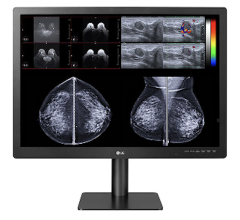
 March 12, 2024
March 12, 2024 
